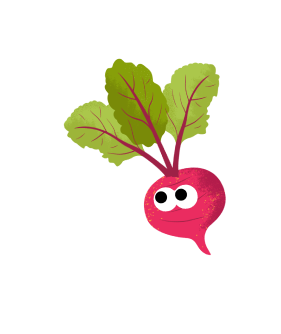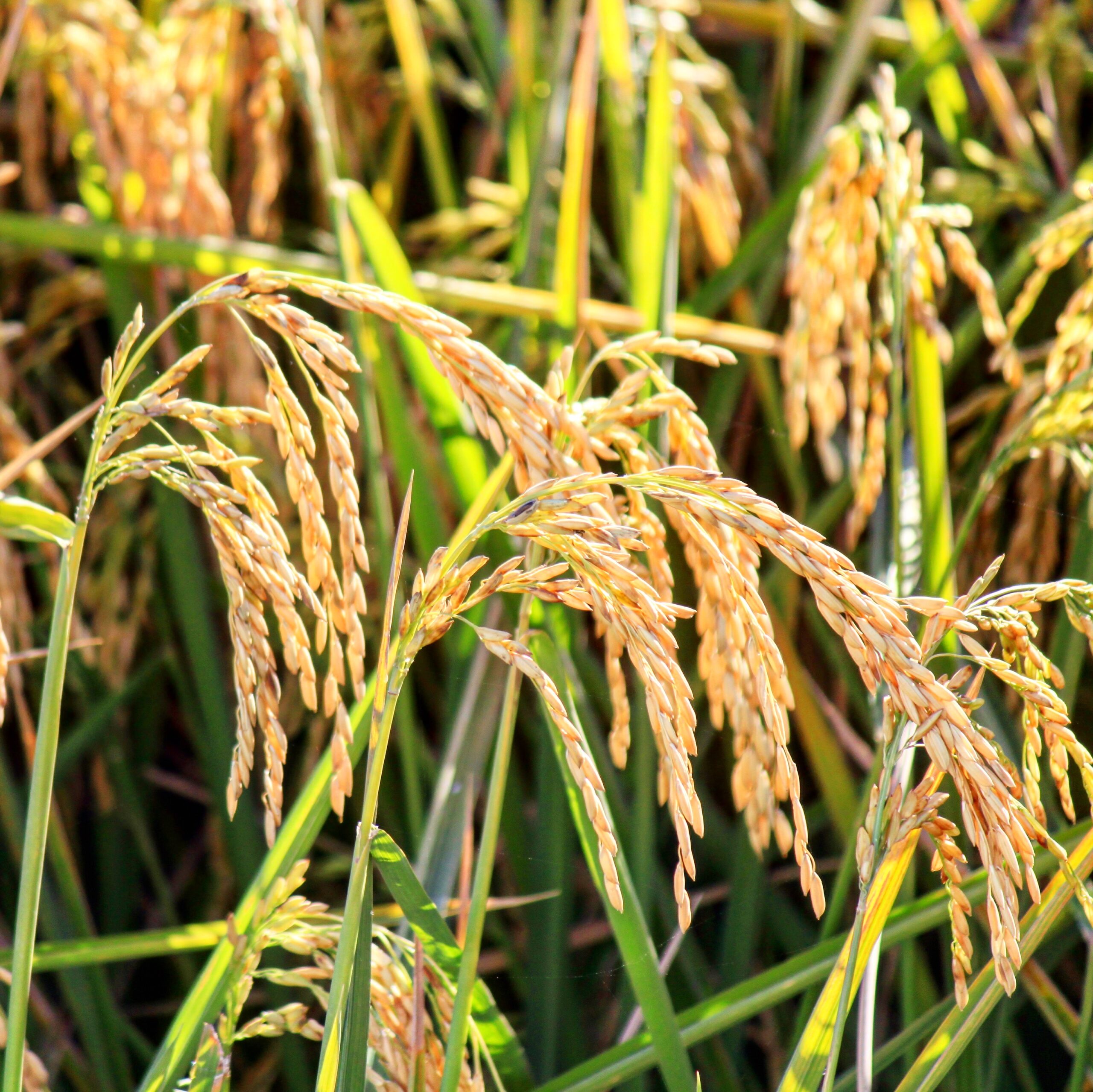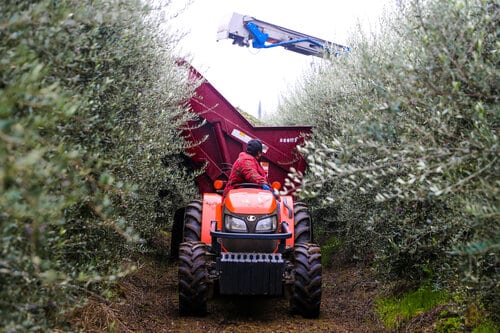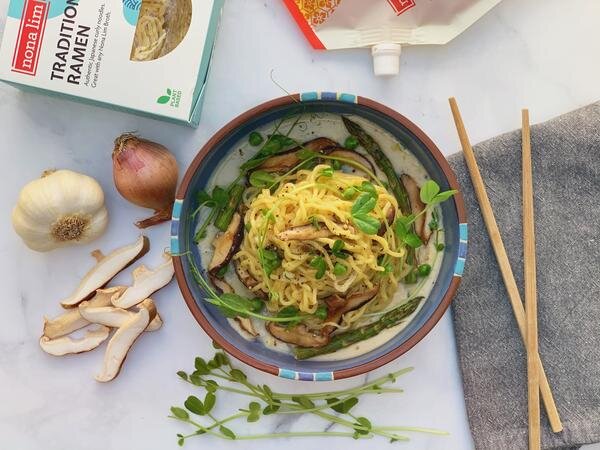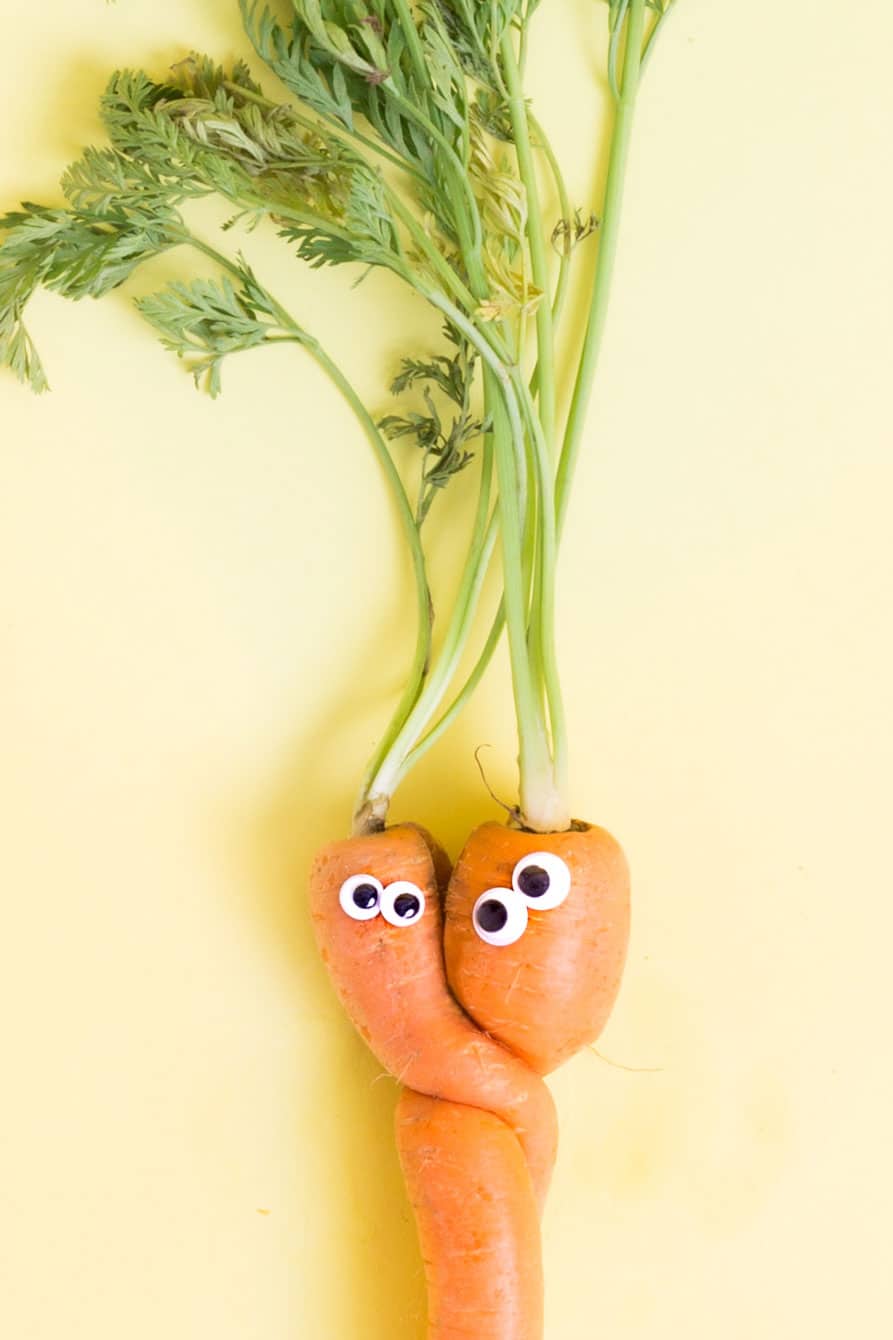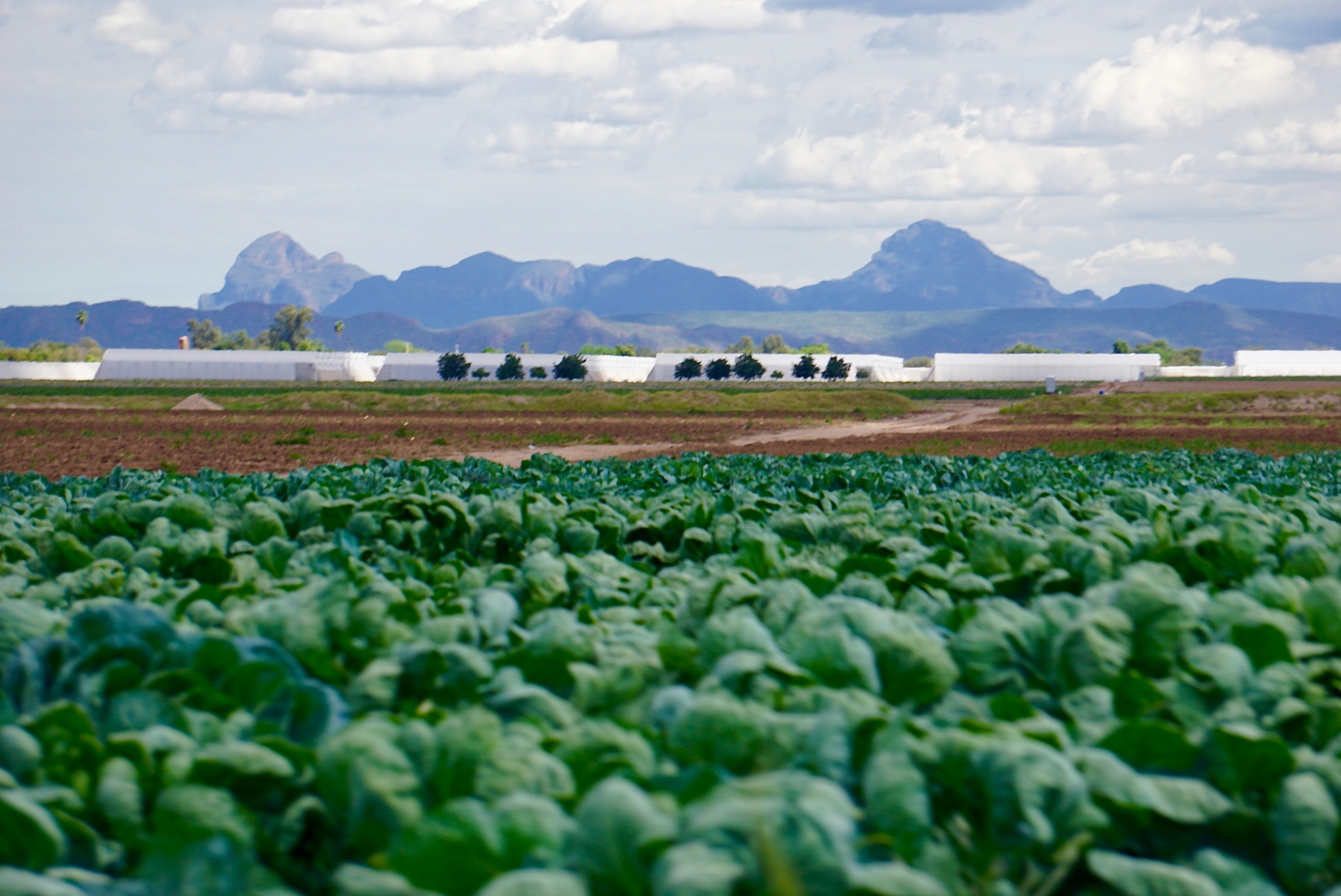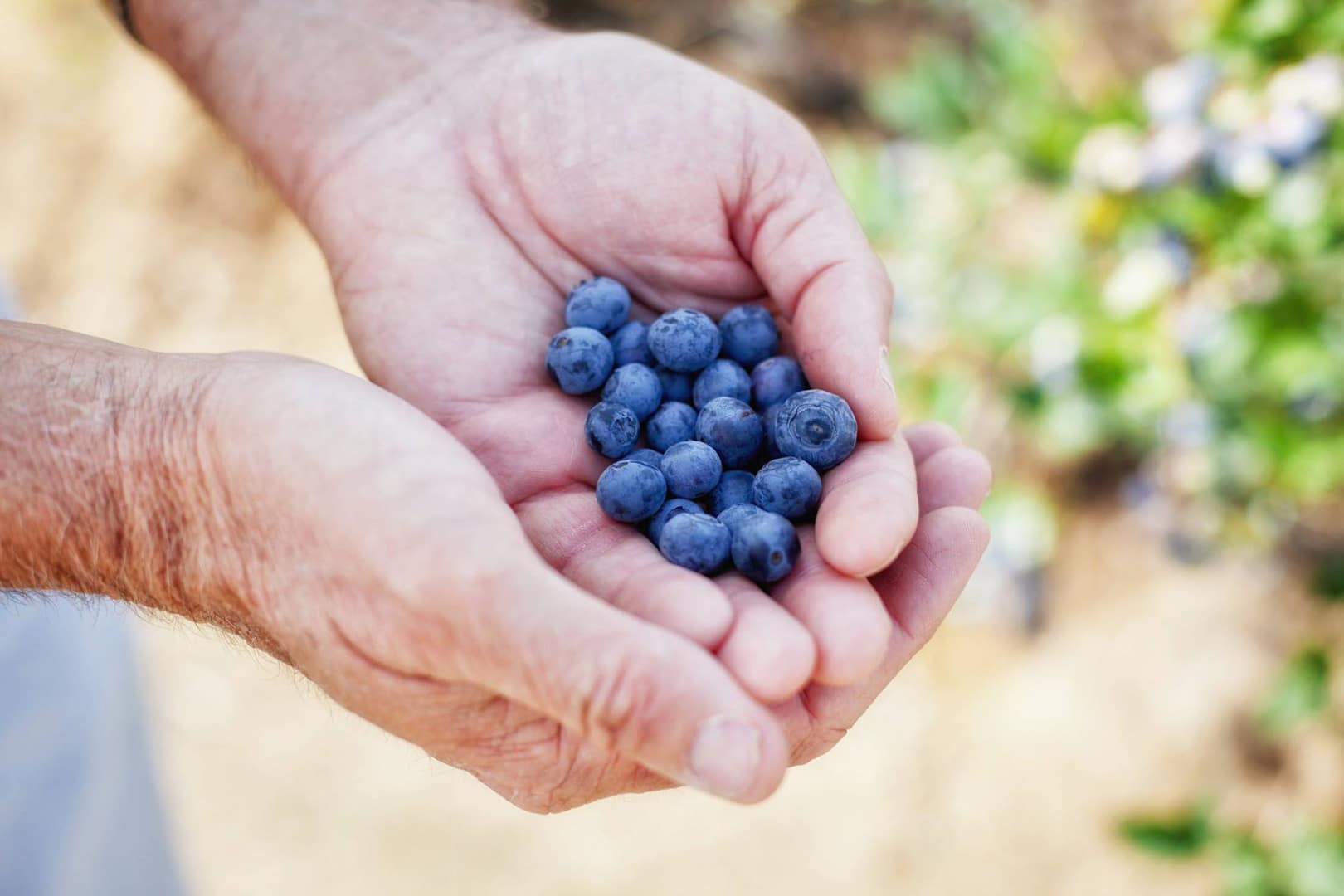The first time we talked with Michael Bosworth about bringing his barely broken jasmine rice to Imperfect Foods, he was sitting atop a combine in his fields.
As enormous food nerds, we were quite excited to open our Zoom call and see this. Here’s one of our dear supplier partners tending to the actual fields where our food is grown! And looking out on Michael’s vast fields, sun-soaked and stretching into the horizon, we started a big conversation about something quite tiny: grains of rice. Broken ones, to be exact.
We first connected with Michael during the pandemic. A fifth generation farmer, Michael grows nine varieties of rice in addition to a few other crops. When we learned about all the regenerative and sustainable practices he implements into his farm, we felt an immediate respect and kinship. He and his team use complex tools to reduce reliance on fertilizer and water, and are proud members of water bird habitat enhancement programs through Natural Resources Conservation Service and The Nature Conservancy. Every action Michael and his team take is aimed at bringing healthy, wholesome food to as many people as possible right now. But they’re not compromising the future for the present. Michael keeps a focused eye on what’s best for the land in the long run, caring for it in a way that will benefit generations to come.
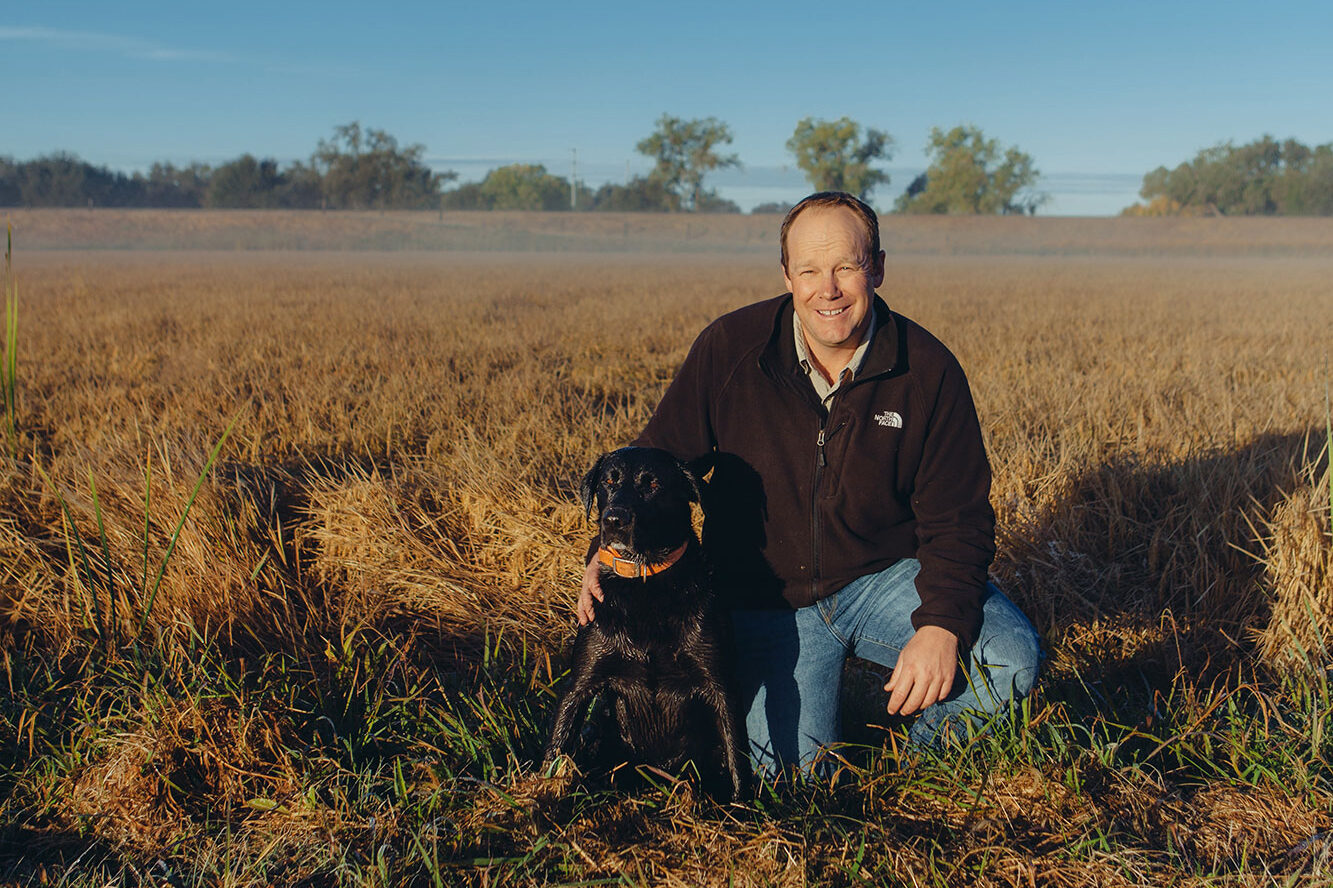
It’s only natural for Michael to think about the future: he and his wife have three sons, ages five, seven, and nine. Though the boys are too young to help dad operate heavy machinery, they lend a hand in other ways around the farm, and Michael is optimistic that someday they’ll take over what he started.
In addition to farming his own fields, Michael started a company called True Origin Foods where he sells rice, popcorn, and beans. Much of the rice is his own, and he also sources from a select few other farmers growing quality products he can stand behind. Some of True Origin’s biggest customers are tech company headquarters that buy massive quantities of rice to feed their employees. But during the pandemic, everyone was eating at home and companies weren’t in the market for truckloads of rice. Michael had a massive crop of perfectly good food with nowhere to go—cue Imperfect Foods’ entrance music!
We grabbed as much of Michael’s excess rice as we could, made it available to our customers, and watched with delight as it flew off our digital shelves.
With a successful first partnership under our belts, we decided to take things to the next level with an exclusive-to-Imperfect product: barely broken White Jasmine Rice.
When it Comes to Rice, How Broken is Too Broken?
In the U.S., rice can only be considered #1 Grade—a perfect product without imperfections—if it contains a maximum of 4% broken kernels. This standard is to ensure quality, but because of the equipment available to U.S. rice farmers and producers, it’s pretty darn difficult to achieve.
Most of the rice grown in California is short grain—think sushi rice. Those kernels are small, round, and resilient, shaped a little like a lemon. But jasmine rice kernels are longer and skinnier, more like a banana. Because so much of California’s rice is short grain, the equipment is set up for that variety. So when you send banana-shaped rice through a machine meant to mill lemon-shaped kernels, it doesn’t always make it out in one piece. Jasmine rice kernels get broken at a higher rate than sushi rice kernels, leaving farmers with more than the allowed 4% of breakage.
Even after sorting out broken kernels, much of this rice doesn’t make the coveted cut for U.S. #1 Grade rice (which can often be sold for a higher price). But here’s the thing: a few broken kernels doesn’t change much in terms of taste and mouth-feel. The rice Michael has on hand has a breakage percentage closer to 10%—think 10 kernels out of 100. That means at least 90 kernels out of 100 are perfectly whole, and when our team sorted through Michael’s rice, we couldn’t find a single cracked kernel. So why should this nutritious rice go to waste?
We say it shouldn’t. When we talked to Michael atop his rice combine, we decided to partner to bring you Barely Broken White Jasmine Rice. Its delicious, nutty flavor is the perfect compliment to stews, curries, and stir fries, and you can feel good knowing it’s grown in idyllic conditions and looked after by careful farmers.
See Where Your Rice Grew Up
One of the great things about shopping with Imperfect Foods is connecting to where your food comes from. When you buy our Barely Broken White Jasmine Rice, you can see the exact state in which your rice was grown.
Depending on the region, your rice might’ve shared a home with migratory birds, soaked in the late summer heat, or swapped places with a crawfish. Imagine everything it’s seen on its journey to you!
Turn your package of White Jasmine Rice over and check the lot code to find the state abbreviation.
Here’s a glimpse into the past life of your rice.
In California…
- 500,000 acres of rice are planted by farms across the state each year
- Most (85%) is Calrose, loved by sushi chefs and restaurateurs coast to coast
- Only a small percentage is jasmine
- As a member of waterbird habitat enhancement programs, Michael floods his rice fields in winter to help decompose remaining straw and provide habitats for migratory birds!
In Louisiana…
- 400,000 acres of rice are planted by farms across the state each year
- Most is long grain with some medium grain and some jasmine
- Due to the warm climate, many south Louisiana growers get two crops per year
- Fields often alternate between growing rice and being flooded for crawfish production
In Missouri…
- 180,000 acres of rice are planted by farms across the state each year
- Most is long grain with some specialty varieties like jasmine
- Migratory water birds love the rice fields in the Mississippi flyway and make them their home

How to Cook Jasmine Rice
Now that you’ve got your hands on some delish jasmine rice and have daydreamed all about its past, you’re probably hungry for the perfect jasmine rice recipe. Look no further.
The ideal jasmine rice to water ratio is 2 to 3. That means for 2 cups of rice, you’ll want 3 cups of water (or broth). If you’re using less than 2 cups of rice, divide the amount of rice you’re using by 2/3rds (or 0.66) to get the amount of water you need.
All that math is confusing, so here’s a helpful guide:
Jasmine Rice to Water Ratio
½ cup rice + ¾ cup water yields → 1 ¼ cups cooked rice
1 cup rice + 1 ½ cups water yields → 2 ½ cups cooked rice
2 cups rice + 3 cups water yields → 5 cups cooked rice
And whether you’re cooking on the stove, in a rice cooker, or in an Instant Pot, here’s how to cook the perfect jasmine rice every time.
Ingredients:
½ cup Imperfect Foods White Jasmine Rice
¾ cups water or broth
1 ½ tsp butter or oil (optional)
To make stovetop jasmine rice:
1. Thoroughly rinse your rice.
2. Combine rice, water or broth, and butter or oil (if using) in a pot. Bring to a boil and cover.
3. Once boiling, reduce heat to low and cook 15 minutes with the lid on.
4. Remove from heat (keep that lid on!) and allow to steam for 10 more minutes.
5. Fluff with a fork and give it a taste. If it’s not quite tender enough, add 1-2 tablespoons of liquid and put back on the heat for 10 more minutes or until tender.
To make rice cooker or Instant Pot jasmine rice:
1. Thoroughly rinse your rice.
2. Add rice, water or broth, and butter or oil (if using) to your Instant Pot.
3. Close the lid and turn the Venting Knob to the sealing position.
4. Pressure cook on high for 3 minutes, then let the pressure release naturally for 10 minutes.
5. Turn the Venting Knob to the venting position to release remaining pressure.
6. Open the lid and fluff with a fork before serving.
Your rice is ready to dance with a stir fry or soak up a curry. May we suggest Salmon and Cucumber Rice Bowls, Butternut Squash & Broccoli Curry, or Easy Sheet Pan Fried Rice?
Better yet, bring your rice all the way home and cook one of Michael’s favorite Bosworth family recipes: Jasmine Rice Salad with Spicy Shrimp.
You can find Imperfect Foods Barely Broken White Jasmine Rice exclusively on our website. Enjoy and have a rice day!
